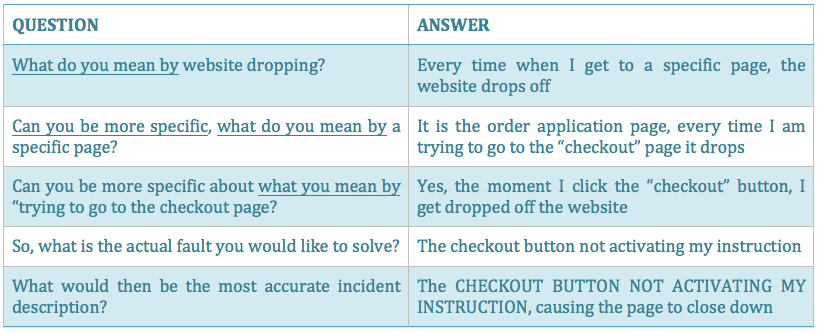Over the years as a consultant, I’ve learned how to listen to what people are saying, albeit doing it for a different reason you might have had in mind. I am doing it to eliminate the “noise” and “clutter” normally surrounding problem solving and root cause analysis sessions. This might surprise you, but the biggest obstacle in solving problems and incidents effectively, is the human nature to “elevate” or escalate things in order to get the appropriate attention of the right person.
"Hearing the words "outage" or "crash" in an I.T. environment is not something you would like to hear on your watch..."
...because this kind of situation really spells doom and gloom for the person accountable for the function. You need to possess the skills to ask questions that will break down these general and vague descriptions so that you and your team could get started with the real issue at hand. Dealing with vague and too general information is going to stretch your investigation cycle way beyond the time you have any patience for.
Let’s start at the beginning, and that is trying to be specific with two factors such as the “fault” you are experiencing and the “object” that has the fault. The terms “not working” or “it’s dead” are not faults. These are descriptions of an end state or the consequence of the fault and still when you look at the problem description of most tickets you would notice such phrases and descriptions of consequences and or the use of highly vague words.
Let’s look at an example. You get the following problem description “Website dropping”. This does not look too bad and you most probably won’t believe me if I tell you that this statement could be improved drastically with the use of a few process questions. Here is the end result of using a few good questions:

So, look at the questions offered and look at the underlined portions and you would notice two question types that would help you to get your end user of client to arrive at a much more effective incident description and thus a much better chance to solve this incident quickly and accurately. I mean, “checkout button not activating” is quite different to “website page dropping!”
This is a good start to being more specific and I will cover subsequent techniques in specificity in the next series of blogs. Please click below for more information and success stories.




